India. Part IMapMay 8, 2007 It’s 45 degrees Celsius this time of year in India. Plus it’s humid. The overall impression you get of India: a plane carrying smashed bricks and waste flew over a land populated by well disposed and superstitious people with its cargo door hanging open. CalcuttaMapIt turns out that Bombay has replaced Mumbai, while Calcutta has been renamed Kolkata in a bout of tea-fuelled nationalism (Alma-Ata became Almaty, a change fuelled by kumis, while fermented milk products prompted the switch from Tallin to Tallinn). It used to be spelt Calcutta, now it’s Kolkata, that’s why there’s been a mad rush to change the first letter of all the Latin alphabet abbreviations. Calcuttans bathe and discuss the latest goings-on. They’re very lucky here in West Bengal. In East Bengal (Bangladesh) the water situation is much worse. 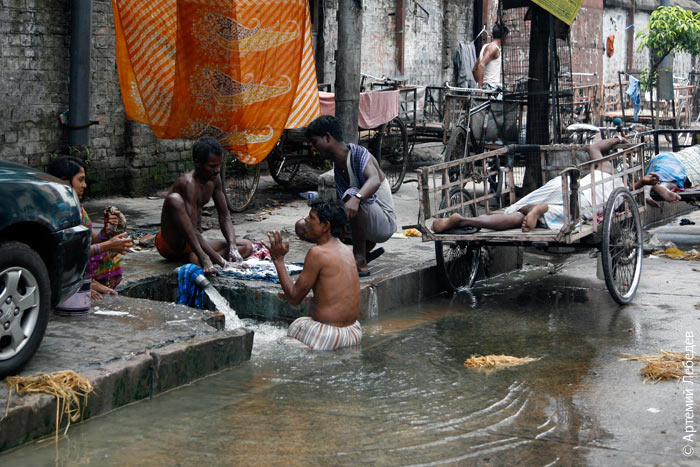 The police logo is emblazoned on all the road signs (it used to read C↑P, but now it’s K↑P, which makes sense). The arrow between the two letters is part of the logo, which really throws you off. 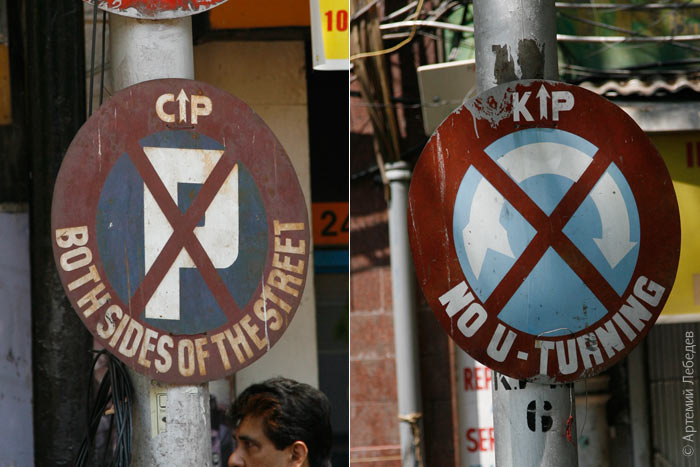 In fact they draw whatever takes their fancy on the road signs.  On-duty policemen are issued with umbrellas in case it rains. 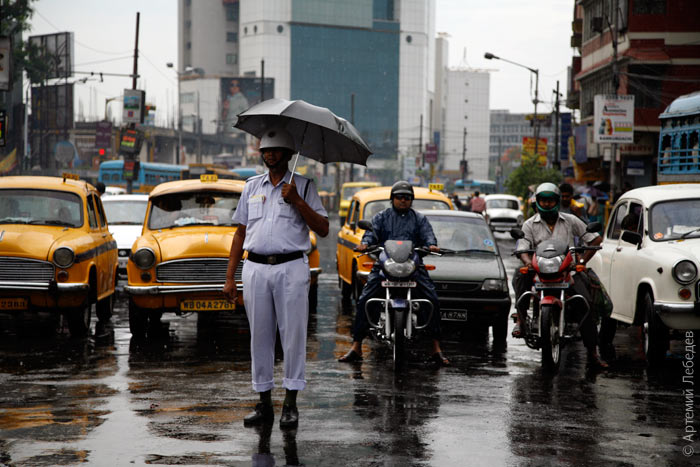 These yellow cars in the foreground are modern (1958 model) and produced in India. However, I’m pretty sure that it is only in Calcutta that they serve as taxis. There’s no law requiring you to install side-view mirrors on both sides, that’s why cheap cars don’t have a mirror on the left side (they drive on the left here). All the car manufacturers delight in scrimping on that one mirror, even the local “Suzuki”. 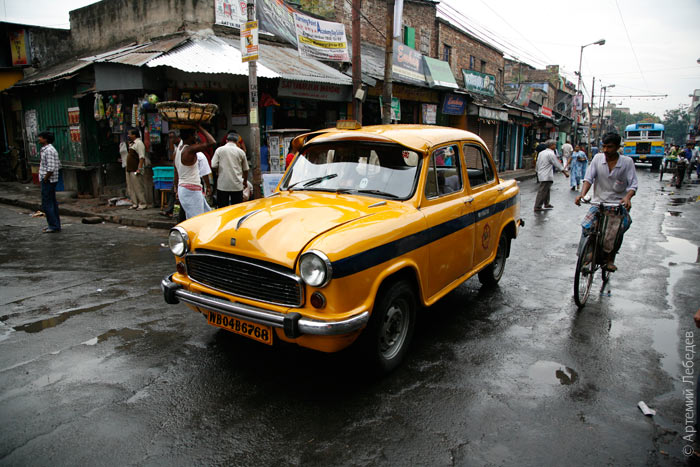 In the film industry art directors win awards for these kinds of finds, whereas here it’s just another mode of transport: 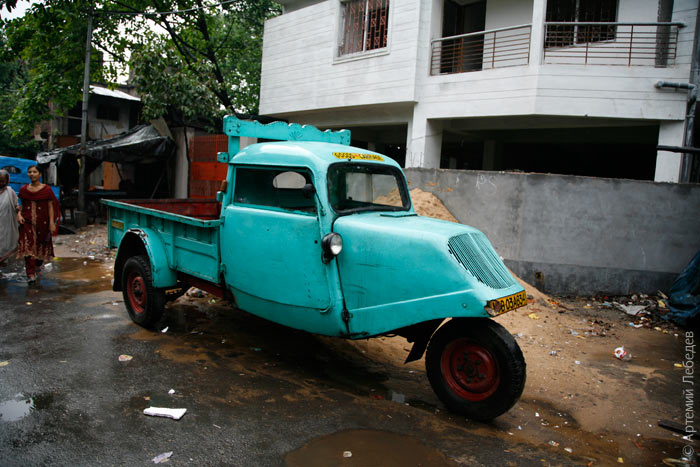 The “stop” sign is only visible from a helicopter; each driver sees only the one letter in front of him. On the plus side, all of the asphalt is incrusted with crushed stone to ensure better traction. 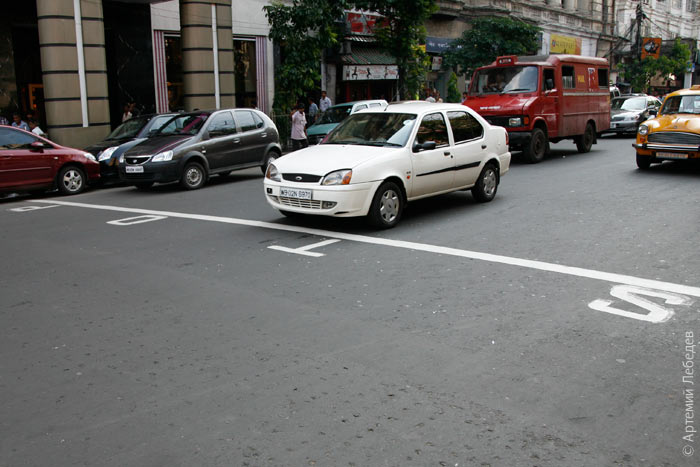 The trams in Calcutta are superb. 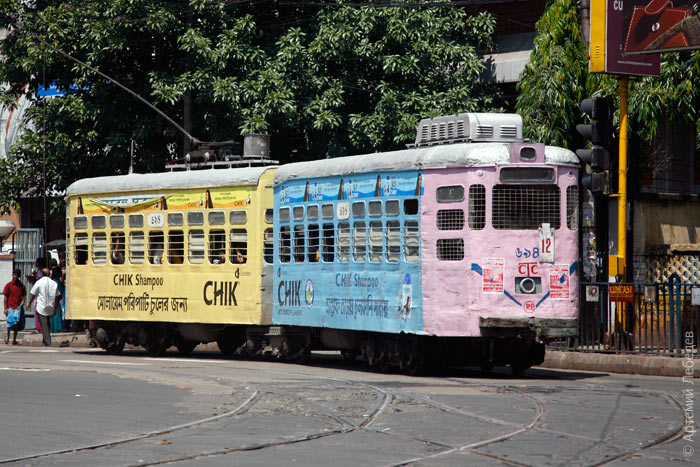 But there aren’t that many of them. 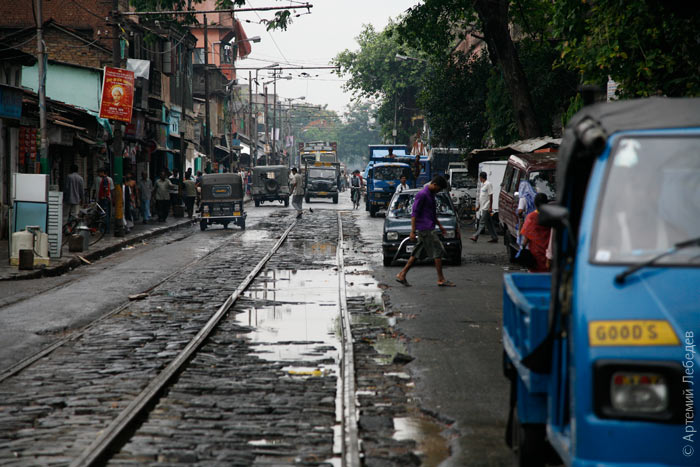 Buses are more common. 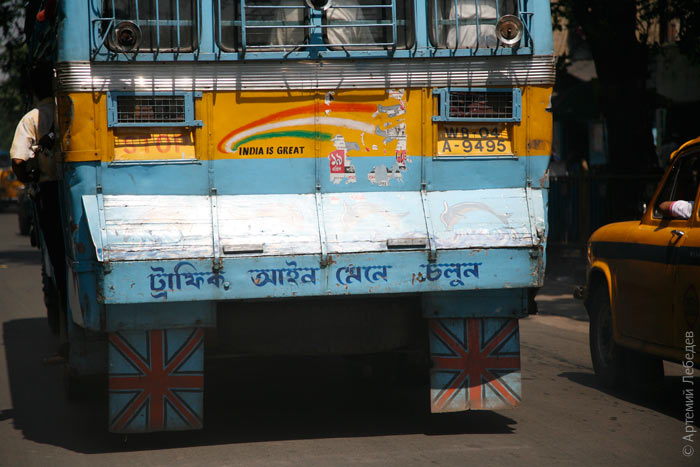 Bus drivers are called pilots here, that why there’s a drawing of an airplane and a corresponding sign on every driver’s door. There’s a different picture of an airplane on every single bus, each one inimitable. 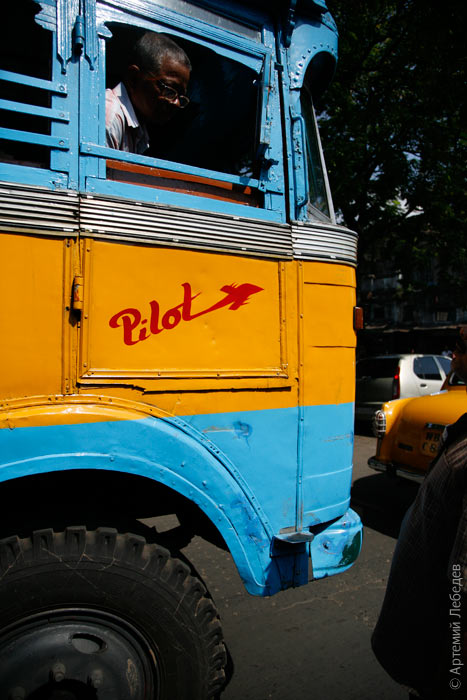 Having said that, you can find all of this in other parts of India too. Meanwhile, pulled rickshaws you’ll only see here: 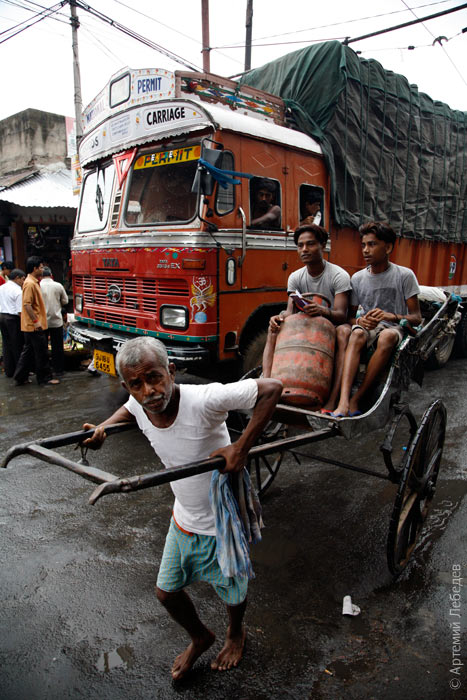 Behind the rickshaw there’s a typical Indian lorry, painted just like the altar of a Buddhist temple. There are signs saying “haulage” and “obey road rules” everywhere. Eyes are frequently drawn next to the headlights. The swastika is added according to one’s taste. 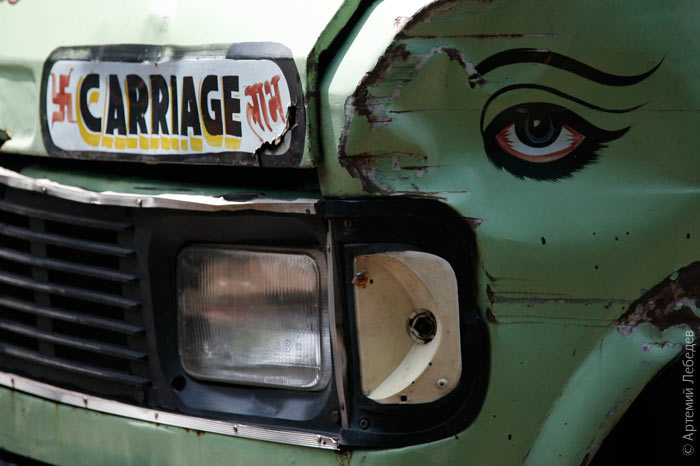 Almost all lorries have a sign at the back saying BLOW HORN or a synonym thereof. 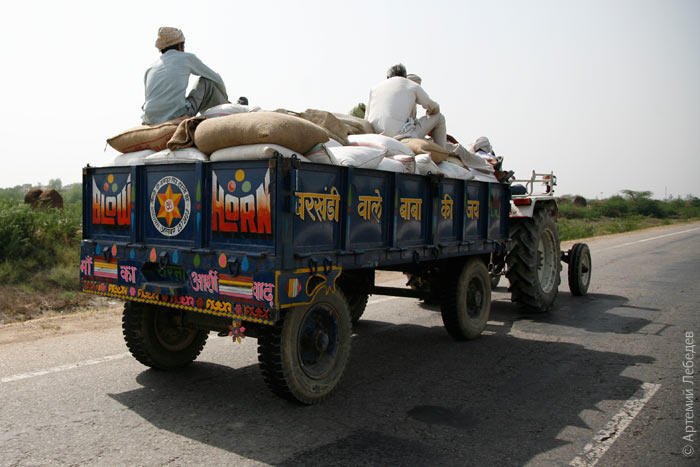 Indians will piss right there in the street. They turn to face the wall and start pissing. And it makes no difference what street they’re on, in what city, what’s next to them. In some places they’re trying to make the process more civilised: 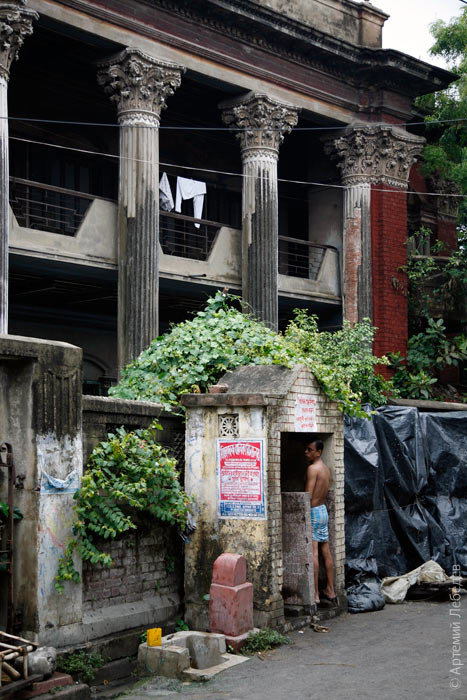 But you can’t build a public urinal next to every building: 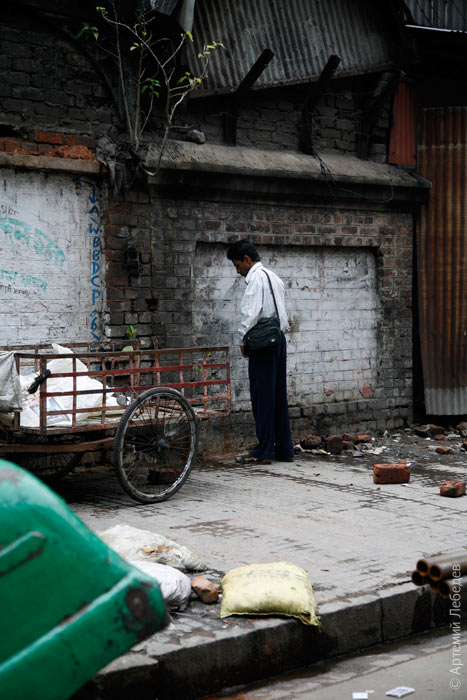 Despite the fact that in many places people dump their waste in the street, there’s no landfill smell hanging in the air. Either the sun burns it off or it evaporates all on its own somehow. 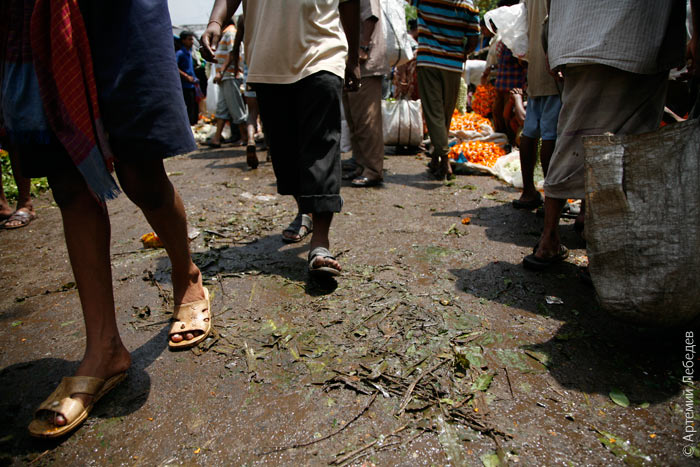 Because of the terrorist attacks the metro has been fitted with metal detectors and there’s a strict ban on photography (readers will know by now that if it were well and truly prohibited they would’ve confiscated our cameras when we came in, like they do in South Korea). 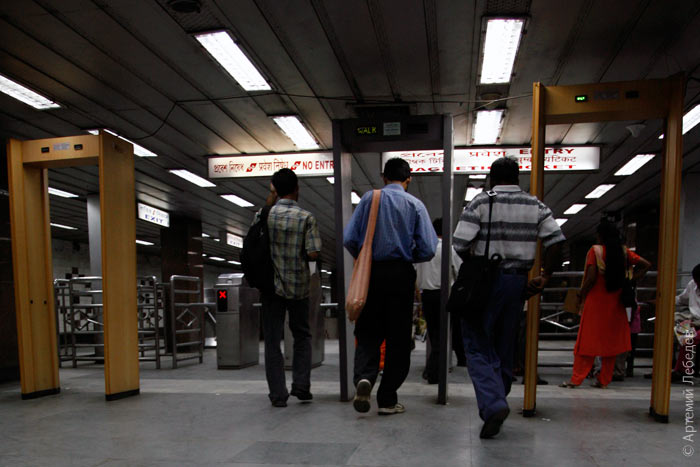 Memories of the communist period fit organically with the cityscape. 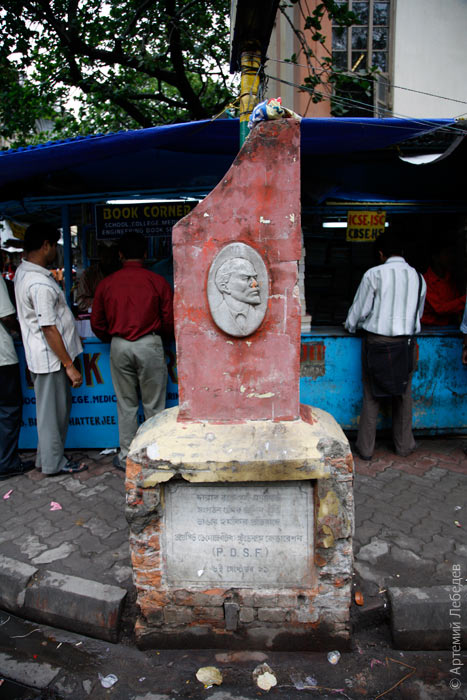 Spiderman has taken a shine to some of the buildings, which he uses as a training ground. 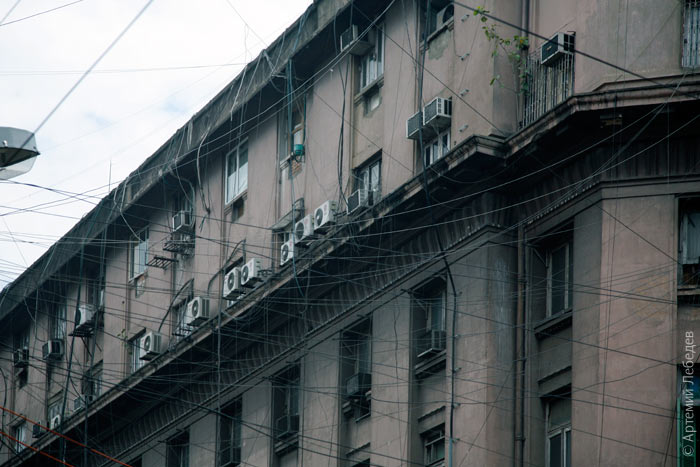 There’s a whole neighbourhood in Calcutta where people do nothing but make statues for an annual festival of some sort.  Outdoor contraceptive propaganda, complete with mustachioed rubber: 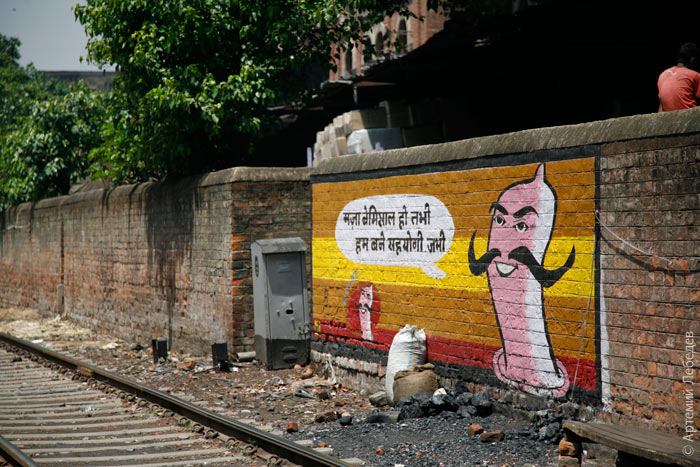 In the centre there’s a ginormous clearing called the Maidan (it’s an Indian word). It’s a favourite with the locals. Couples sit about, horses graze, dogs sleep and tea sellers stroll. They’ve never heard of green tea in India. They exclusively drink black, exclusively very sweet, and exclusively milky tea. A strong, white syrup of sorts. 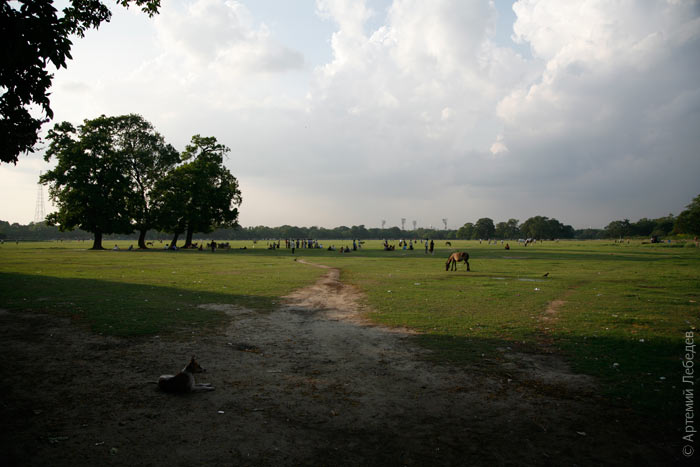 Also, if sanitary inspectors ever come to India they will most definitely pass out immediately — there’s probably nowhere else in the world where you get squalor of such cosmic proportions. There isn’t any hygiene to speak of. People mostly eat with their hands, even rice. But let’s give credit where it’s due — they do wash their dishes. Lunch is fast approaching: 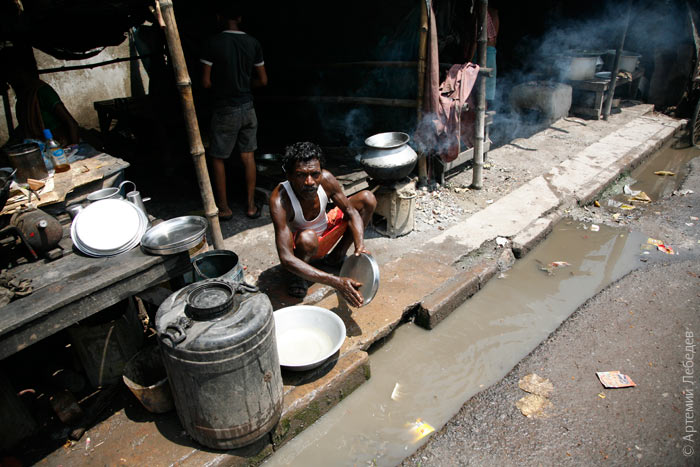 The embankments of this tributary of the Ganges have spectacular views. 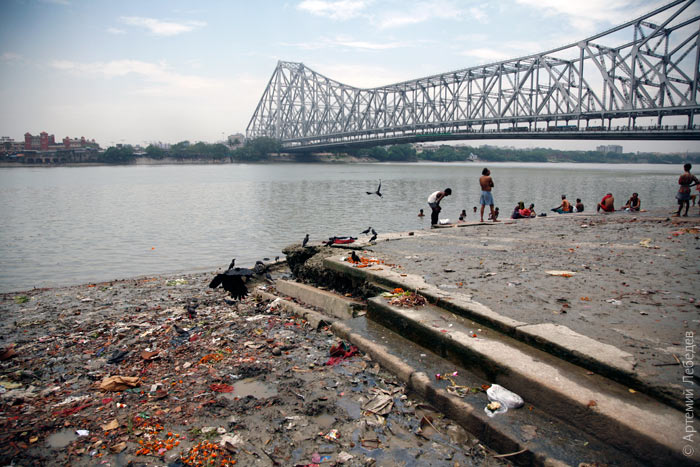 Rivers to Indians are what deer are to the Chukchi — the solutions to all of their problems. They use rivers to wash in, do their washing, wash dishes, fetch water, throw out food scraps, and scatter the ashes of the deceased. What’s more is, all of this doesn’t have to be done separately, nor at a distance: you can do it all at once and all in one place. 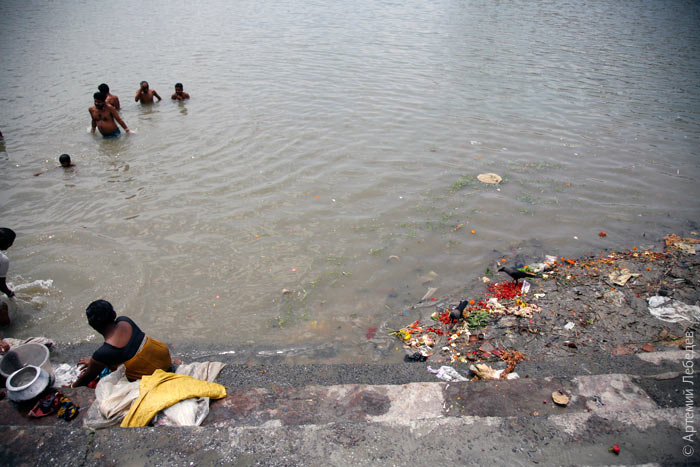 |